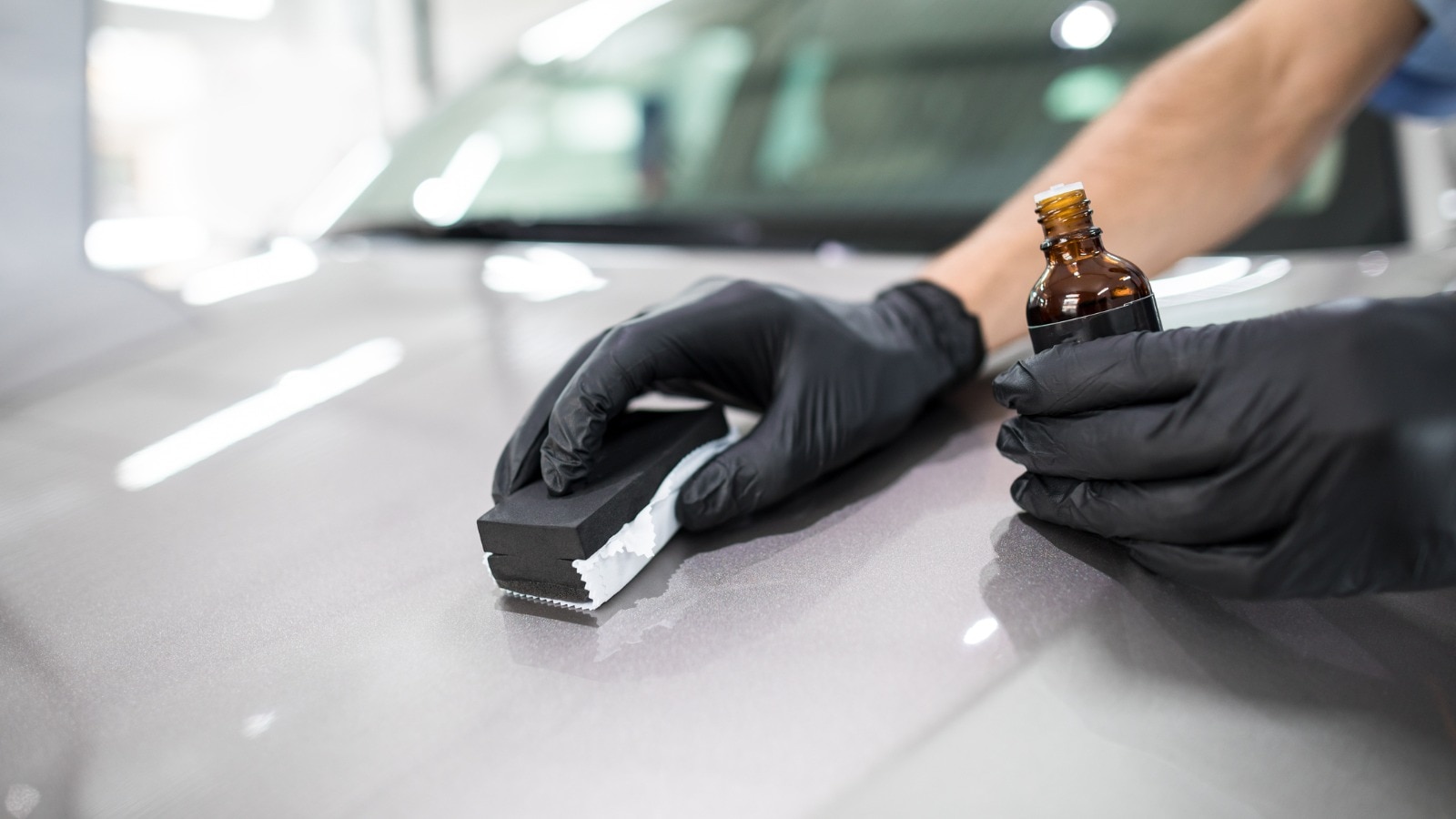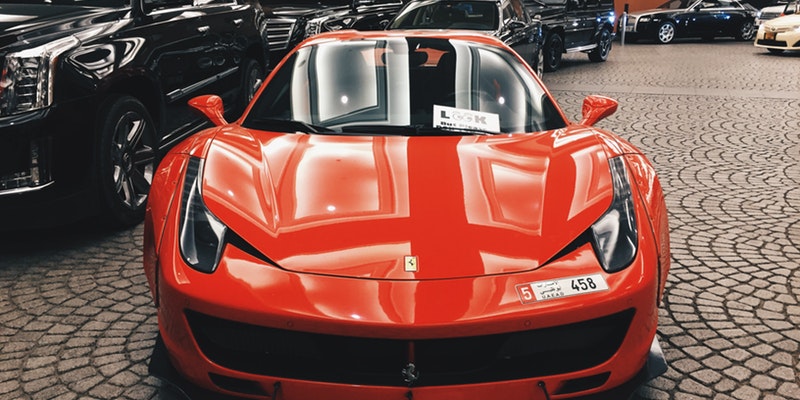The Scientific Research Behind Ceramic Finish: How It Boosts Your Automobile's Visual and Resilience

Comprehending Ceramic Coating Chemistry
The chemical composition of ceramic coverings plays a critical function in identifying their toughness and safety homes on vehicle surface areas. Ceramic layers are generally comprised of silicon dioxide (SiO2), which is a main component giving solidity and heat resistance. Various other components such as titanium dioxide, silicon carbide, and polysilazanes are usually included in enhance specific residential or commercial properties like UV resistance, adhesion, and hydrophobicity.
Silicon dioxide, additionally called silica, forms a clear and strong layer on the automobile surface area when applied appropriately. This layer acts as a guard, safeguarding the paint from environmental contaminants, UV rays, oxidation, and chemical spots. Titanium dioxide assists in blocking dangerous UV rays that can cause paint fading and damage. Silicon carbide is recognized for its abrasion resistance, making the ceramic layer long lasting and hard versus physical damages. Polysilazanes are used to boost the finish's adaptability and bond to the vehicle's surface area, making certain lasting defense. Recognizing the chemistry behind ceramic finishings is important for both applicators and automobile owners to appreciate the worth and advantages these coverings provide in keeping the aesthetic appeal and longevity of automobiles.
Enhanced Gloss and Mirror-like Complete
Recognizing the chemical structure of ceramic finishes not only reveals their protective homes yet additionally drops light on just how they add to achieving an enhanced gloss and mirror-like coating on automobile surface areas. The trick to the shiny effect lies in the nano-ceramic particles present in the finish. These bits fill in microscopic pores and imperfections on the surface, producing a smooth and degree surface. As light hits the coated surface, it mirrors consistently, giving the look of a deep, glossy sparkle. Additionally, the chemical framework of ceramic coatings enables them to form a strong bond with the automobile's paintwork, preventing oxidation and maintaining the clearness of the coating over time. This bond also resists ecological contaminants, such as dirt and crud, that can boring the luster of the lorry. The combination of loading residential properties, light representation, and resilient defense makes ceramic finishes a preferred selection for those seeking a mirror-like and dynamic coating for their automobiles.

Effect On Paint Protection and Longevity
Ceramic layers for automobiles significantly improve the durability and protection of the paintwork. By forming a chemically resistant layer on top of the automobile's clear layer, ceramic coatings serve as an obstacle against various ecological pollutants that can harm the paint with time. These coverings are made to push back dust, water, road salt, bird droppings, and various other harmful compounds, lowering the threat of paint oxidation and rust. In addition, the hardness of ceramic finishes supplies a level of scratch resistance, assisting to keep the vehicle's appearance for a prolonged period.
In terms of durability, ceramic finishes offer a sturdy service contrasted to typical waxes or sealers. Overall, the safety residential properties of ceramic coverings contribute substantially to maintaining the lorry's paintwork and enhancing its visual charm over a prolonged duration.
Resistance to Impurities and Rough Aspects
With the safety guard offered by ceramic coatings against various ecological contaminants and components, vehicles are able to preserve their beautiful look regardless of exposure to harsh problems. Ceramic coverings develop a solid obstacle that repels water, dust, dirt, and other usual pollutants, preventing them from bonding to the vehicle's surface.
Furthermore, ceramic layers use UV protection, protecting the car's paint from the sun's unsafe rays that can trigger fading and oxidation. This resistance to UV damage assists maintain the shade intensity and shine of the paint for longer periods. By creating a sturdy and long-lasting barrier, ceramic finishes make sure that the car's outside stays secured against a wide variety of impurities and harsh aspects, preserving its visual charm and resilience.
Application Strategies and Maintenance Tips
For ideal outcomes when using ceramic coatings to cars, using correct techniques and sticking to suggested upkeep methods are crucial. The application procedure of ceramic layer calls for interest to information and accuracy. Prior to applying the ceramic layer, it is important to thoroughly clean and decontaminate the lorry's surface to make certain appropriate attachment. This entails washing, claying, and possibly brightening the paint to produce a smooth canvas for the ceramic coating to bond efficiently.
When applying the ceramic coating, it is advised to function in little sections to ensure also coverage and to protect against the product from drying also rapidly. Utilizing applicator pads or microfiber fabrics, apply the covering in a crisscross or up-and-down activity, depending upon the product's directions. After the finishing is used, allow it to cure for the defined time before rubbing off any deposit.
In terms of upkeep, normal washing with pH-neutral soaps and staying clear of harsh chemicals or rough devices will certainly aid maintain the ceramic covering's integrity. Routine inspections for any kind of damage or endure the coating can also assist maintain its protective residential properties with time.

Final Thought
In verdict, ceramic coating improves a lorry's aesthetic appeal and resilience with its chemical structure, providing a glossy coating and shielding the paint from ecological pollutants. Its resistance to severe elements and simplicity of maintenance make it a popular selection for automobile owners looking to protect the site web look of their vehicles. On the whole, ceramic finishing is a scientifically backed service for preserving the appearance and longevity of your vehicle.
Understanding the chemistry behind ceramic coverings is important for both applicators and automobile proprietors to appreciate the value and benefits these finishes offer in keeping the visual charm and longevity of vehicles. (ceramic pro)
Recognizing the chemical make-up of ceramic finishes not only discloses their protective residential or commercial properties however also sheds light on just how they add to achieving an enhanced gloss and mirror-like coating on lorry surfaces. web link By forming a chemically immune layer on top of the lorry's clear layer, ceramic finishings act as an obstacle navigate here versus various ecological impurities that can damage the paint over time. In general, the protective buildings of ceramic finishes contribute substantially to maintaining the lorry's paintwork and enhancing its aesthetic allure over an extensive period.
In verdict, ceramic finishing improves an automobile's visual allure and durability via its chemical structure, giving a glossy finish and shielding the paint from environmental impurities.